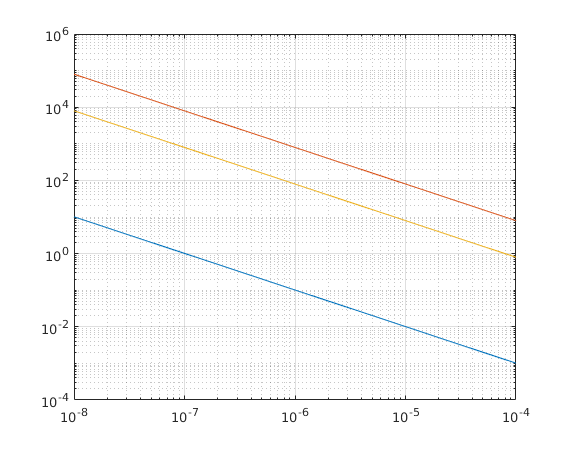Contents
Filter Example
% /home/dimarzio/Documents/working/12229/lectures/filter_example.m % Sat Nov 18 11:08:42 2017 % Chuck DiMarzio, Northeastern University, Fall 2017
Filter: Vary C and pick a good one
% Parallel R_2LC feedback impedance in opamp % omega = 1/sqrt(LC), Q = R2 sqrt{C/L), A_V = -R2/R1 midband gain % 2 pi f = 1/sqrt(LC), B/f = sqrt{L/C)/R2, A_V = -R2/R1 midband gain % B = sqrt{L/C/L/C)/R2/2/pi % B = sqrt{1/C^2)/R2/2/pi % L=1/(2 pi f)^2/C % R2 = sqrt{1/C^2)/B/2/pi % R1 = R2/A_V A_VMB=10;B=200;f0=500; C=10.^[-8:.01:-4]; L=1/(2*pi*f0)^2./C; R2 = sqrt(1./C.^2)/B/2/pi; R1=R2/A_VMB; figure;loglog(C,L,C,R2,C,R1);grid on;

Picked from Graph C=5e-6
C=5e-6 L=1/(2*pi*f0)^2./C R2 = sqrt(1./C.^2)/B/2/pi R1=R2/A_VMB
C =
5.0000e-06
L =
0.0203
R2 =
159.1549
R1 =
15.9155
Use these results to filter the signal in HW9
A_VMB=10;B=200;f0=500; C=5e-6 L=1/(2*pi*f0)^2./C R2 = sqrt(1./C.^2)/B/2/pi R1=R2/A_VMB % H is the actual gain, A_V, which is a function of frequency %H = % Your code here %Vout=H.*V; % Use the variable you used for V % if you used this for the FT %V=fftshift(fft(v)/npts*max(t)); % then use this for the IFT (Just undo everything you did going % forward) %vout=ifft(ifftshift(Vout*npts/max(t)));
C =
5.0000e-06
L =
0.0203
R2 =
159.1549
R1 =
15.9155